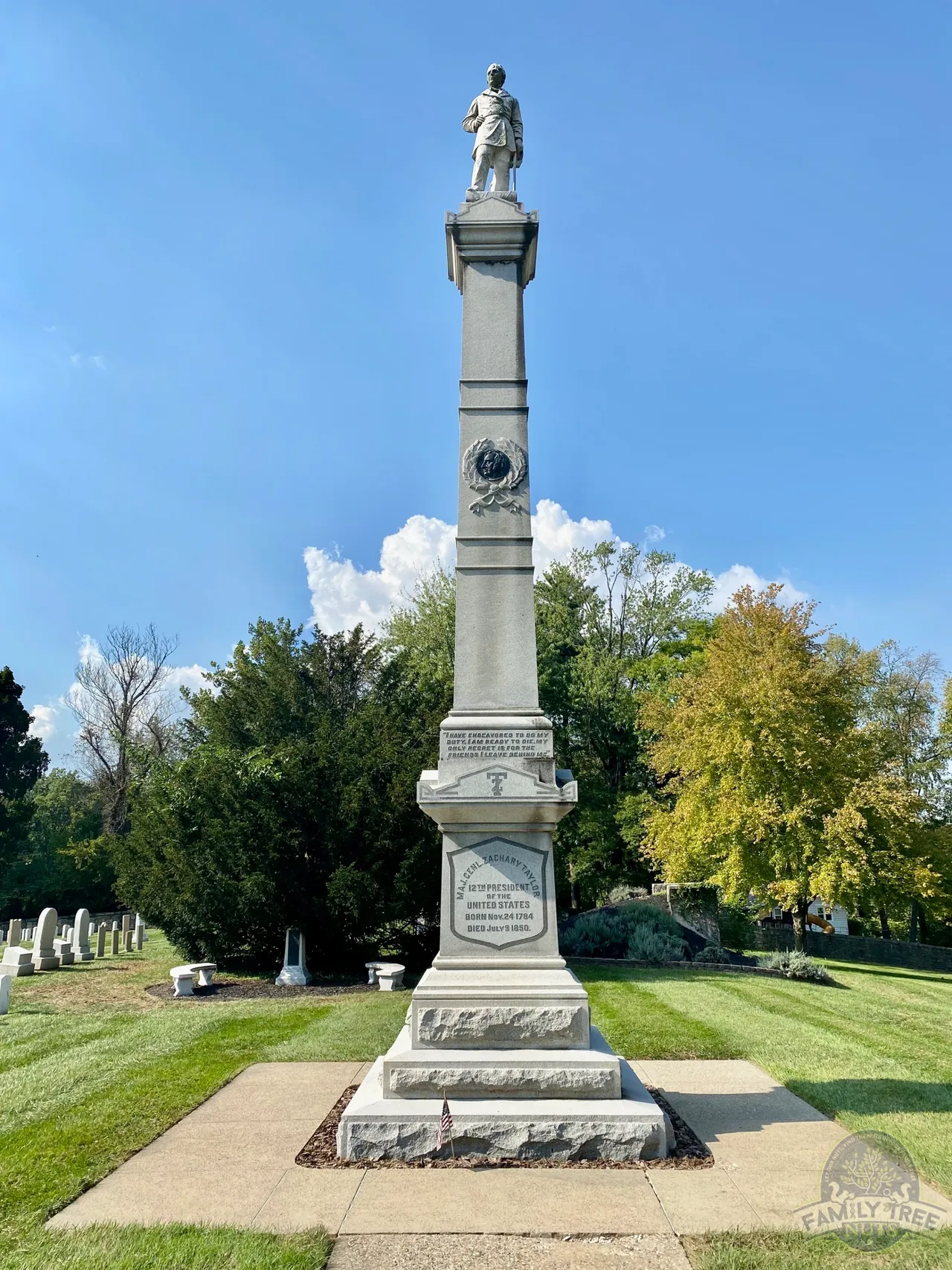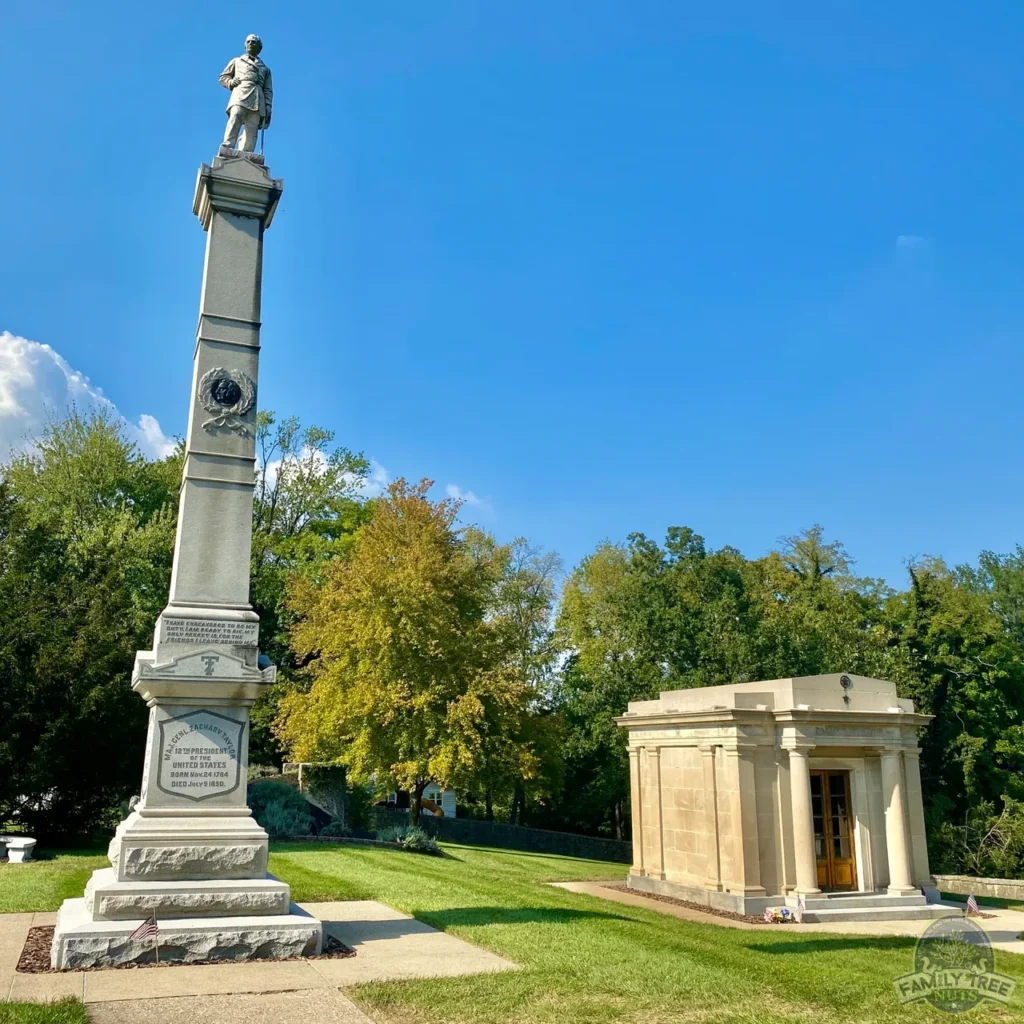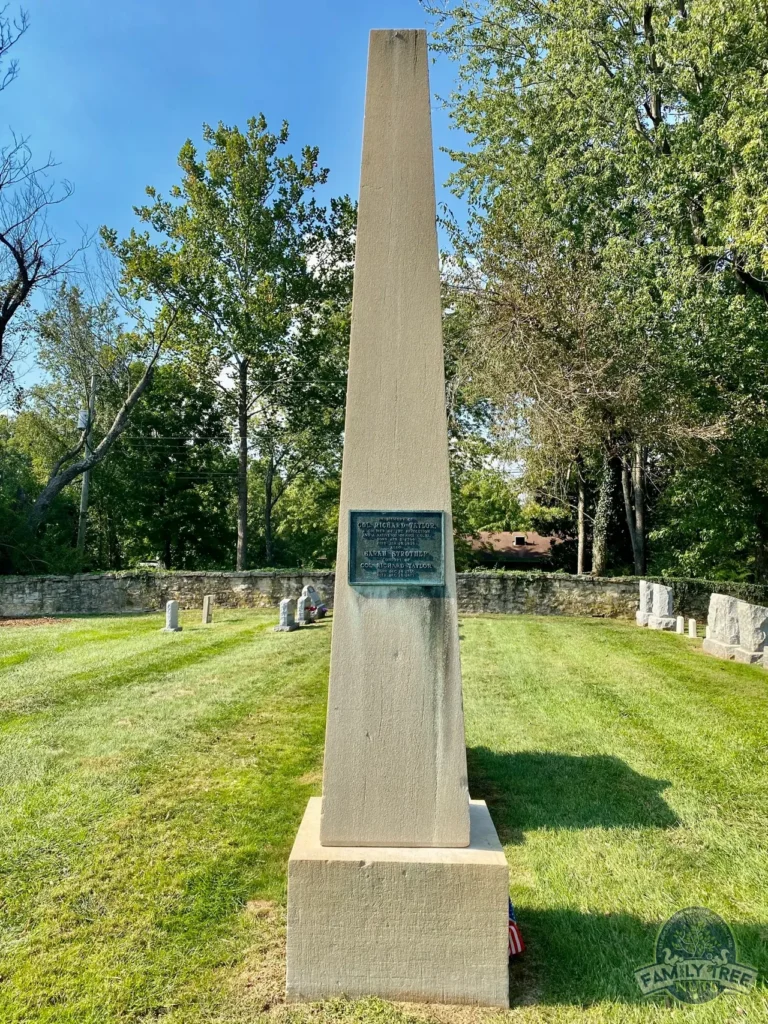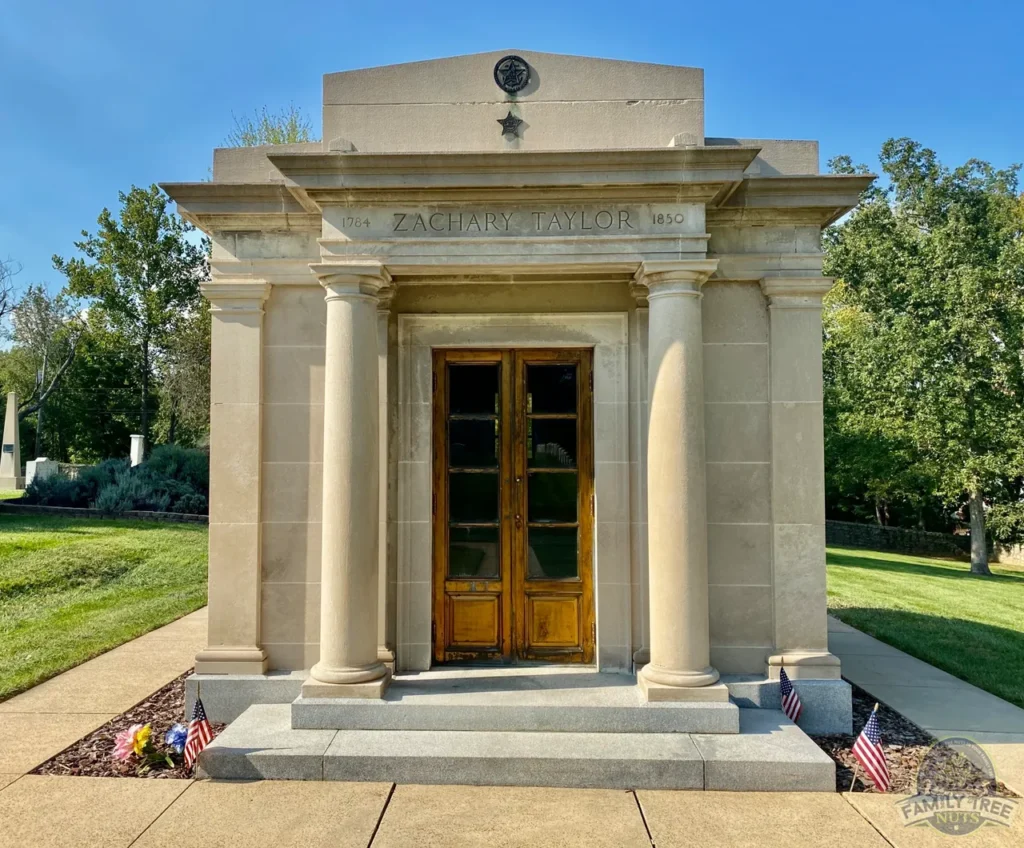
ZACHARY TAYLOR, PRESIDENT & MAJOR GENERAL
“Old Rough & Ready”, President Zachary Taylor! As big of a figure that he was in his time, he is a man that many today forget about when they think of great Americans. He lived the bulk of his life in the years between the Revolutionary War, and the Civil War, that period of American history that many teachers skim over. So, who is President Zachary Taylor? He was a Major General, the 12th President of the United States, a career soldier. He was commissioned in 1808, as a Captain, in the War of 1812. He was a Colonel in the Blackhawk War of 1832, and also in the Second Seminole War. He was a General and Hero of the Mexican American War, and in 1848, he was the first president elected without prior political office. His main goal as President was to preserve the Union, and he died unexpectedly. He lived almost his entire life in service to his country.

Taylor was born November 24, 1784, in Orange County, Virginia. He was the last president born before the United States had a constitution. His family were wealthy plantation owners, with multi-generations of wealth. He was a second cousin to President James Madison, and he was a third cousin, once removed to Robert E. Lee. His father, Richard Taylor, was a Lieutenant Colonel in the Revolutionary War. Richard came with his brother Hancock, and explored the Ohio and Mississippi Rivers, from 1769-1771. Richard and Hancock went from Pittsburgh, to New Orleans, and then back to Virginia via the sea, and were said to be in the first group of white men to accomplish this feat. Richard was given 8,000 acres near Louisville for his service, but he stayed in Virginia for a while before he came to Kentucky.
His brother Hancock moved to Kentucky, in 1773, which was before the settlement of Fort Harrod in 1774, or Fort Boonsborough in 1775. Hancock surveyed around modern-day Frankfort in 1774, and was surveying land around the mouth of the Kentucky River, near modern-day Carrollton, for Governor Dunmore, for lands to be given to troops from the French and Indian War. He was shot by Native Americans, and his companions tried to dig out his bullet wound. Daniel Boone was sent to warn everybody to get out of Kentucky, because the Native Americans were getting ready to attack whites in the Kentucky country. On the way back to Virginia, Hancock died at the mouth of Taylor’s Fork, and Silver Creek, in modern-day, Madison County, which is less than a mile from the authors home. In 1803, Richard went to Hancock’s grave with Robert Rhodes of Boonsborough and marked it.
Zachary was a young boy when his family moved to his father’s Kentucky lands, sometime around 1790. His father named their home, Springfield, and Richard’s holdings grew with the growth of Louisville, and soon he owned 10,000 acres, and a few dozen slaves. Richard is buried behind his son’s monument and tomb.

An interesting fact about President Taylor, is that he is said to have had bad handwriting all of his life. Some say bad handwriting is a mark of intelligence, your brain works faster than your handwriting. In 1810, Zachary married Margaret Mackall Smith, and they had six children. One of their children was Sara Knox Taylor, whom he nicknamed, “Knoxie”, married Jefferson Davis, in 1835. Yes, that Jefferson Davis, the President of the Confederacy later in his life. Jefferson Davis was a subordinate under Taylor, and Taylor objected to the union, because he didn’t want army life for his daughter. Davis loved her so much, that he resigned from the army, but Knoxie died of malaria just three months later. Another one of his children was Richard “Dick” Taylor, who during the Civil War served as a Confederate General.
Zachary Taylor received his first commission in the Army, in 1808. He was sent to New Orleans due to all the “rattling of sabers” leading up to the War of 1812. About the same time, the city of Louisville was growing, and Zachary Taylor’s holdings and his wealth was growing along with the city. Zachary Taylor purchased bank stock, and bought a couple plantations, and owned more than 200 slaves. In 1811, he was sent to take command of Fort Knox, which was on the site of Fort Sackville, in Vincennes, Indiana. He was called to testify in a court martial and was not present for the Battle of Tippecanoe against the Shawnee.
Taylor served in the Northwest Territory region during the War of 1812. He was made a Brevet Major and he had success as a leader. After the war, he was brought back to the rank of Captain and he resigned. He came back to the army in a year, and he was promoted back to Major. In 1817, and 1818, he commanded Fort Howard, in Green Bay, Michigan Territory, that is Green Bay, Wisconsin today. He returned to Louisville in 1819, and was promoted to Lieutenant Colonel, in 1821. He was sent to establish a military post in Louisiana, and he stayed there until 1824. From 1824 to 1826, he was on recruiting duty. Also, in 1826, he purchased another plantation in Louisiana, and he moved his family to Baton Rouge. Then in 1828, and 1829, he was in command of Fort Snelling, and Fort Crawford in the Michigan Territory. In 1832, he was promoted to Colonel and had action in the Blackhawk War. In 1837, Taylor was sent to Florida to fight in the Second Seminole War. On Christmas of 1837, he took part in the Battle of Okeechobee. Soon, Taylor was promoted to Brigadier General in May 1838. He took command of all the American forces in Florida for the next two years. Here he earned the nickname, “Old Rough and Ready”.
In 1840, he took leave and toured the country with his family. He had certainly earned it, by being stationed all over the west. Then in 1841, he was made commander of the Second Department, Western Division, West of the Mississippi, South of the 37th Parallel, Bordering Missouri, and Arkansas, and Kansas, and Oklahoma. He set up his station in Arkansas, and not much went on for the next few years, so he often went back to tend to his land, and his properties. In 1844, Taylor was sent to Louisiana, to defend Texas during an attempted annexation. Later President Polk sent him to lead a force into Mexico, anticipating a Mexican invasion, and in March of 1846, Taylor was sent to the Rio Grande River. Then in May, Zachary Taylor led American forces against the Mexican army at the Battle of Resaca de la Palma, and the Battle of Palo Alto. After the battles he was promoted to Brevet Major General, and then the next month, he was given a promotion to full Major General.

Due to all of his success, people began to compare him with George Washington and Andrew Jackson. In September 1846, Taylor defeated the Mexicans at the Battle of Monterrey, in only three days, even though the Mexican defenses were supposed to be impregnable. President Polk sent General Winfield Scott to attack the port city of Veracruz, and he ordered many of Taylor’s most experienced men to join with Scotts force. Santa Ana heard that Taylor’s forces were much smaller, and he decided to move against Taylor. Taylor’s forces were well dug in and defeated Santa Ana at the Battle of Buena Vista. Zachary Taylor remained at Monterey until November 1847, when he took a steamer ship home. Here he received a hero’s welcome in New Orleans and Baton Rouge. Taylor was presented with many awards for his service in the war, and he is the only person to be awarded three congressional gold medals. Ulysses S. Grant served under Taylor and spoke highly of Taylor’s leadership.
The next event for Taylor was the presidential election of 1848. Taylor was wanted by both parties, but he kept his politics secret. He said that he never voted, but if he did vote, he would have voted for the Whig Party, and Henry Clay. Southerners had assumed that he would support the expansion of slavery. Eventually he declared himself a Whig, and he beat out Henry Clay, and Winfield Scott for the nomination. Taylor chose Millard Fillmore, from New York as a running mate to earn more northern voters. Together they defeated Lewis Cass and Martin Van Buren for the presidency. Zachary Taylor was the last person elected president, that was not in the Republican, or Democrat party. He was the last Southerner elected until Woodrow Wilson, in 1912.
After his election, he stayed at his command at the Western Division before heading to Washington D.C. to be president, in January 1849. He wanted to place Kentucky Governor Crittenden, as Secretary of State, but he passed, because he had just won the governorship of Kentucky. Crittenden was the one that spearheaded Taylor’s election. It took about a month for Zachary Taylor to get to Washington, due to bad weather, all kinds of delays, sickness, and even an abduction! A family friend, captained a steamer ship, and picked Taylor up before the appointed steamer arrived, that was supposed to have the honor to transport the president. So technically, the family friend kidnapped the president. Taylor laughed when he found out what happened.
Taylor’s term started on Sunday, March 4, 1849, but he wasn’t sworn in until Monday because of his feelings about the Sabbath. So, Senator David Rice Atchison was sworn in for just a day, which makes for neat trivia. It is said that Zachary Taylor was the first to use the phrase, “First Lady” when he met Dolly Madison. The major issue during his presidency was what to do with slavery in the newly acquired territories. Taylor was a slave holder himself, but he didn’t think that slavery was practical in the Southwest for growing cotton and sugar. Which brings us to the question, with mechanical advances, would slavery have died out eventually, if we didn’t go to war? We’ll never know.

In 1850, Henry Clay took an even more strong leadership role, drafting The Compromise of 1850. California received statehood, and there had to be a slave state, for each free state admitted into the Union. Slavery stayed in Washington D.C., but the slave trade there was banned. Another interesting thing that happened during this time is President Taylor almost led an army to defend the New Mexico Territory from a Texas invasion. Imagine a state invading another state or territory!
On July 4, 1850, President Taylor ate cherries and iced milk at a fundraising event for the Washington Monument. He got severely ill with an intestinal ailment. Many wondered if he had been poisoned. There was quite a bit of bad sewage in Washington D.C., and cities everywhere weren’t very sanitary at the time. President Zachary Taylor died, on July 9, 1850, at age 65. Vice President Millard Fillmore was sworn in as president. President Taylor’s body was transported to his family home near Louisville and was buried by his parents at their home, Springfield.
He was the last president to own slaves, and he was the second to die in office. Several things are named for Zachary Taylor including military bases, World War II navy ships, counties, and cities. The Zachary Taylor monument stands at his grave site and is a formidable tribute to an amazing man. Behind the monument, and to the side, is the tomb of Zachary Taylor and his wife, and behind their current tomb is their original tomb. Just behind the original tomb, is several of his family members graves, to include his father Lt.Col. Richard Taylor.
Old Rough and Ready, Major General and President Zachary Taylor is a man that is unlike many that we find in history, especially today. Many men of his time are now controversial, and Taylor is no exception. Many today find fault with his deeds, but one thing is for sure, his impact on The United States cannot be questioned. In the opinion of the author, he is an American Hero. Be sure to see the video from his gravesite, at the link below.
– Col. Russ Carson, Jr., Founder, Family Tree Nuts
